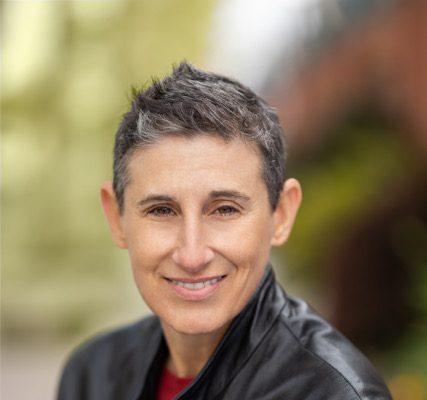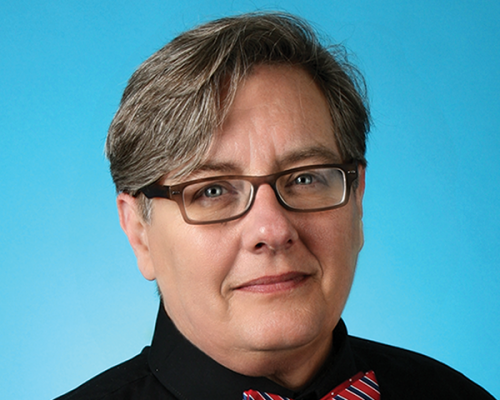NLGJA granted $130K by CDC for launch program
by Chuck Colbert
The National Lesbian & Gay Journalists Association (NLGJA) has received a five-year renewable grant from the Centers for Disease Control and Prevention to deliver journalism training that will enhance strategies and skills in covering HIV/AIDS.
“NLGJA shares in CDC’s confident resolve that the battle to stop the spread of HIV/AIDS is a winnable one,” said Adam Pawlus, NLGJA’s executive director, in a press statement. “The media can serve as a bridge, linking those at greatest risk of contracting HIV with the facts, tips and action steps of the Act Against AIDS campaigns and other CDC initiatives along with other research and information.”

The grant is part of CDC’s Partnering and Communicating Together to Act Against AIDS program, administered by its Division of HIV/AIDS Prevention’s Communication Branch. Other grantees include organizations addressing media or health issues focused on serving the African American, Latino and LGBT communities.
With the grant to NLGJA, $130,000 in the first year through fall 2016, the association of LGBT journalists would provide a series of in-person and web-based trainings, fellowships and specially-designed online resources.
These will equip journalists to cover issues and trends related to HIV/AIDS in new ways while reiterating the time-tested basics of talking, testing and treatment. These journalists in turn can better serve their viewers, readers and listeners with important information, especially those in communities and geographic areas most impacted by HIV/AIDS, according to the CDC.
HIV activists and educators voiced praise for NLGJA’s grant.
“Wow, this is really terrific,” said Mark King, who blogs on his web site, My Fabulous Disease
www.MyFabulousDisease.com, a health and wellness site. “This HIV educational support for journalists couldn’t come at a better time. The HIV epidemic has morphed into a story of criminals, injustice, crippling social stigma from within our own community, and the politics of pre-exposure prophylaxis (PrEP).
“Let’s take PrEP, for instance. Because the drug Truvada as PrEP was developed without the cooperation of its maker, Gilead Sciences, there was no multimillion-dollar patient and physician educational effort about it when it came on the market. (Gilead has a business model focused on treatment, not prevention). In this vacuum, so much misinformation and stigma about PrEP was allowed to fester — and stories about low efficacy, side effects and the sexual mores of PrEP users spread, all of which has since been debunked.
“The rise in HIV criminalization may be the leading moral issue of our time in HIV advocacy. But outside of a core group of dedicated activists, little is known or understood. I certainly hope this grant increases media capabilities, and as importantly, increases access to those of us actually living with HIV. Our stories should be told by us.”
Sean Strub, activist and author of “Body Counts: A Memoir of Activism, Sex and Survival,” offered his perspective.
“There are three distinct issues that I hope this program from the NLGJA will help address:
“One, the volume of coverage. The attention to the epidemic has waned and it is seldom in the media except when press is prompted by an event (World AIDS Day) or a property interest (pharmaceutical companies, research labs, etc.)
“Two, the depth and perspective reflected in the coverage. Too often it is journalism by press release, without reporters digging in, making the calls, treating claims from pharma with skepticism, and understanding the bigger context that is relevant. Why do we have loads of funding to bring people to Washington to lobby for ADAP (AIDS Drug Assistance Program) funding, but nothing to lobby for price controls, access to generics or to allow states to negotiate the prices for the drugs on their formularies? Why is there so much money available for community groups to promote PrEP, but almost nothing for PEP (post exposure prophylaxis)? How is PrEP affecting other prevention funding? Why do some informed experts think the promotion of PrEP may lead to a higher rate of HIV among young African-American MSM (men who have sex with men)? What happened to the self-empowerment movement? Why do so many reports and studies say that stigma is the number one obstacle and we must have greater involvement of PLHIV (people living with HIV) in order to stop the epidemic, yet when one looks at the funding, there’s nothing for truly effective stigma reduction and there’s almost no support for networks of PLHIV? We need journalists who ask these and other questions, not simply report on a press release.
“Three, the voices and role of PLHIV. The mass of AIDS service organizations created in the 1980s were almost all created by people with HIV and their very closest partners and allies. We dominated the boards of directors of those groups. ‘Nothing about us without us,’ was the mantra respected by all. That’s almost all gone. We are on the boards of the organizations we created only in token numbers these days, with few exceptions, and sometimes not present at all. What happened? How did the peer-to-peer service delivery network we created revert to the dominant ‘benefactor-victim’ service delivery paradigm? What happened to the respect for the role of PLHIV in policy development and service delivery? When did we become them?
“I’m delighted to see NLGJA take this on and it is a big task.”
Journalists interested in these free trainings and resources, available to those regardless of NLGJA membership, should contact
PACT@nlgja.org to get updates.
NLGJA is an organization of journalists, media professionals, educators and students working from within the news industry to foster fair and accurate coverage of LGBT issues. NLGJA opposes all forms of workplace bias and provides professional development to its members.TOP STORY
Volume 17
Issue 9
 The grant is part of CDC’s Partnering and Communicating Together to Act Against AIDS program, administered by its Division of HIV/AIDS Prevention’s Communication Branch. Other grantees include organizations addressing media or health issues focused on serving the African American, Latino and LGBT communities.
The grant is part of CDC’s Partnering and Communicating Together to Act Against AIDS program, administered by its Division of HIV/AIDS Prevention’s Communication Branch. Other grantees include organizations addressing media or health issues focused on serving the African American, Latino and LGBT communities.





